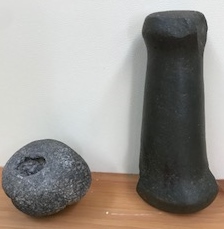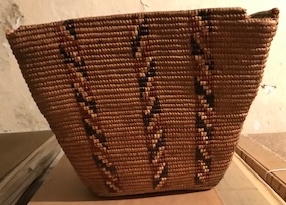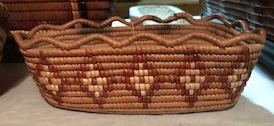Imagine this… There are no cars, no buildings, no electricity, and no stores. Only the dry, sagebrush hills of the valley with the Thompson and Bonaparte Rivers flowing through.
10,000 years ago, before the arrival of European Explorers and Settlers, this area was home to the Nlaka’pamux and Secwepemc peoples. They called this site “Tuk Tuk Chin” which translates to “a place where the truth is spoken” (now the town site of Ashcroft).





What do you think the Indigenous peoples clothing would have been made out of?
What did they eat?
What were the baskets used for? What were they made out of?
How did the Indigenous peoples move from place to place?
What did they live in?
The First Peoples made their clothing out of animal hides primarily from deer and moose. Food was plentiful and there were fish in the river, wild onions and potatoes, roots and berries, and game. The First Peoples traveled with the seasons to hunt and gather in preparation for the winter. Cedar root baskets helped to carry and store food, blankets, and other valuables. Birch bark baskets were commonly used for plates and bowls, and to boil water.
The First Peoples mainly walked from place to place, sometimes using dogs and horses to transport people and goods. In the warmer months as they traveled gathering food for the winter, they had a portable framework of poles covered with bark, woven rush mats or animal skin. In the winter months, Kekulis were used. These pit-houses would home small and large families, and consisted of a circular depression dug into the ground that was the floor and base for a wooden structure supporting a roof covered with Earth.
Story Time
Listen to “The Story of Grasshopper” from the book: Coyote as the Sun and Other Stories, Secwepemc Cultural Education Society, Kamloops BC (1993).
(Royalty free music from https://www.fesliyanstudios.com)
Try to find a grasshopper and send us a picture!
Art Activity
Artifacts were traditionally created to fill a need. These implements served a useful and practical purpose. Items like baskets, tools and weapons were later decorated adding a personal touch to the craftsmanship. The design often reflected the personality and spirituality of the craftsman, and could be traced back to the individual who made it.